
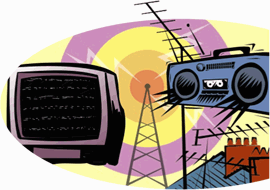
|
Television Interference (TVI) and Electro Magnetic Compatibility (EMC) |
|||
|
Ofcom online complaint reporting of TV or Radio Interference |
|||
|
|
|
||
If you cannot see the full index shown on the left edge of your screen, please go to my main page at http://www.qsl.net/g0isw

For Radio Amateurs the difficulties associated with Television Interference (TVI) & Electromagnetic compatibility (EMC) can be both frustrating and difficult to deal with. I will share with you my own personal experiences and the solutions that have worked for me.
Imagine that you are quite happily transmitting away using your Amateur Radio equipment from home, when suddenly in the middle of your conversation (QSO) there is the dreaded 'knock at the door'. You interrupt your QSO and open your door to find an irate neighbour who tells you that their TV picture and/or sound is suffering from 'Interference' and they think that you are to blame.
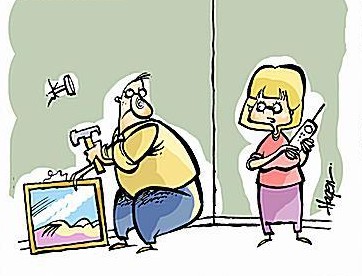
A simple scenario like this can lead to great problems for you, because straight away you are on the defensive and are effectively guilty in their eyes until you prove your innocence, they will generally also believe that because there is no problem with their TV unless you use your radio equipment, then the fault and blame must surely rest with you. That false, but commonly perceived incorrect assessment is the most difficult part to counter with them due to their usual lack of knowledge on the subject.
Let us look at this in stages.
Firstly, there is a problem with their TV picture/sound. Never, ever, accept immediately or say to them that it is your 'fault' and you will stop transmitting, because it is highly likely that there may be nothing wrong at all with your radio transmitting equipment and you will end up being worse off by not daring to operate for fear of further knocks at your door each time, by an increasingly irate neighbour.
Find out what time/s their TV picture/sound was affected. Does this match exactly the times you have been operating? This is why your logbook can be a great ally. If the times do not match then you can prove it isn't you and could be anything from atmospheric conditions, TV transmitter mast problems, weak TV signal strength, passing taxi communications etc.

Here above is an example of a TV picture suffering from co-channel interference, often caused by high pressure weather fronts allowing distant TV transmissions to be received simultaneously with the local TV signal.
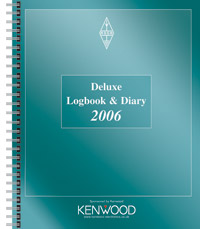
If however the times in your log book do match the reported TV problems, then it is reasonable to consider that your signals are affecting your neighbours television, however there is a HUGE difference between 'interference' and 'breakthrough' or 'lack of immunity' in perception of where the problem lies. Always avoid using the term 'interference' wherever possible.
'Breakthrough' caused by a radio transmitter
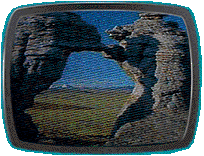
Image with interference
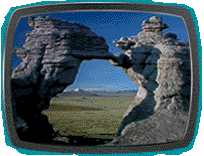
Image without interference
Help is at hand, you should ensure before you have this problem to deal with that you are armed with copies of the following documents:
These publications provide advice to consumers and mention many faults with TV installations that can lead to problems, which are not the fault of Radio Amateurs. They explain in a formal and professional way, that cannot be accomplished in a brief and awkward chat with your neighbour on your doorstep.
Now, you are in a position to politely, but firmly offer assistance to your neighbour by pointing out to them that it could be deficiencies in THEIR TV installation, which should be considered FIRST. Give them the leaflets, explain they are self explanatory and that their TV dealer and/or installer should be where they need to go next to establish that their TV installation meets current standards and written guidance.
If that solves the problem, great!
If not and their TV installation is adequate then there is a completely FREE solution, that I would recommend next. Get them to complete the Ofcom online complaint reporting of TV or Radio Interference and request an OFCOM engineer investigation.
There is NO CHARGE for this investigation if your neighbours TV installation is correct, but if THEY have deficiencies then there is a £50 fee payable for the engineers to fix the problem using their arsenal of filters and knowledge. I am supremely confident that this approach would solve even the most severe TVI to the satisfaction of your neighbour and you, letting you both enjoy your pastimes.
Finally, always be polite and courteous when dealing with your neighbours. It is much easier working together to solve the problem.
As recently as January 2006 I have personally dealt with a TVI problem where my next door neighbour had purchased a new terrestrial digital LCD television, which had been installed over Christmas. Every time I used even the lowest amounts of RF on 144MHz FM, her digital TV picture would disappear. Strange because my own digital TV picture was perfect.
Because I get on very well with my neighbour she allowed me to look at her TV installation. The problem was quickly identified by me. The TV dealers had installed a setback broadband amplifier to compensate for the weak digital TV signal that her non-digital roof top aerial was producing. A cheap solution for them and her, but totally inappropriate as mentioned in official guidance.
I advised her to contact her TV installer and as simply as I could I explained the problem and that it would occur if any radio frequency user was anywhere near, such as taxis, ambulances, Police, PMR etc. I gave her the forms and asked her to immediately inform me of any further problems. I did this after removing the setback amplifier.
Result was no more TVI, but weak digital signal leading to pixilation. This was resolved by the TV installer coming out and replacing the wall mounted coaxial cable outlet for a better one. She now has perfect TV and I transmit as normal. I even received a bottle of wine for being so helpful!
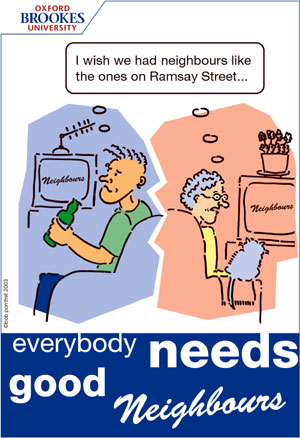
If that hadn't of worked though then my next step was to help her complete the Ofcom online complaint reporting of TV or Radio Interference and get a speedy, but 100% guaranteed solution to a problem that was not of my making. Also I personally never operate at full legal power, I will use 50 watts instead of a 100 watts (never mind 400 watts) because my signal reports are not much less than they would otherwise be and I have significantly reduced my field strength for nearby TV installations.
Why might your neighbour need a new TV aerial?
All UK terrestrial TV services, analogue or digital, are carried within the UHF band channels 21-68.
Analogue services from each of the UK transmitters are grouped into smaller bands of channels from within the above range. This is because transmitters that are in close proximity to each other and/or are sending very high strength signals need to use different bands in order to minimise any picture /sound interference that would otherwise be caused.
Colour coding is used, as shown below, to identify the various bands and you can check which your current aerial has by looking for the corresponding coloured end bung located in the front of it. Aerial groups are as follows:

Further performance gains and interference controls can be leveraged from aerials on homes being aligned either horizontally or vertically at the different transmitters close to each other.
Serving the entire UK nation with TV services has meant that the UHF band is very crowded; not least when some channels are used to accommodate VCRs, Set top boxes, Games consoles and alike that are connected via an aerial (RF) lead to the TV.
Fortunately Digital Terrestrial signals (DTT) can be transmitted at much lower levels and cause less interference with analogue signals. As such they can be located between the existing analogue services but depending on geographical location of adjacent transmitters may need to be spread across the entire 21-68 UHF spectrum.
The existing banded aerial that some homes carry, will not be able to serve up the entire DTT channel line up. Consequently a wideband aerial that covers the full 21-68 channel range is required to achieve this.
Filters
This covers how to install some
helpful filters at your Radio-station transmitter site.

LOW-PASS FILTER LF-30A by KENWOOD
LOW-PASS Filter
First you should get yourself a Low-Pass Filter,- The filter let's RF-Signals
below 30MHz pass and attenuates everything above 30MHz. This eliminates all
signals getting into higher frequencies,- such as FM-Radio and the TV-Band being
emitted from your transmitter.
The Low-Pass Filter is installed on your antenna cable. It should be installed
behind any Power Amplifier but before any tuner.
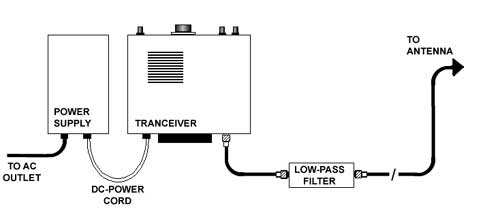
Installation of LOW-PASS FILTER
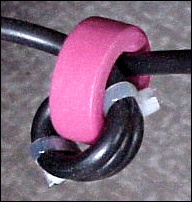
Installation of an Purple-4C65 'AMIDON' Toroid core on AC-Power cord
RF-Chokes
The idea with RF-Chokes is to 'Block' RF-Signal leakage into your power-lines
causing interference in other electronic equipment.
Make a coil of your AC Power-cord onto the Toroid core,- The Toroid core need to
be made of proper ferrite material colour-code with purple or pink. (Code 4C65 or
4A11) You have to make some experiments to get the right numbers of turns,-
should be about 6 if working on 28MHz. (Lower frequency = more turns)
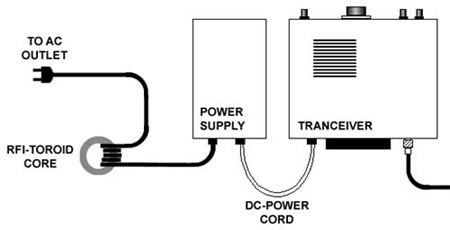
Installation of Toroid-core on AC Power Cord.

Newsflash: Have you seen the strange, but true story of a digital TV set-top box which was transmitting an aircraft Mayday message? Read here!
|
|
|
||
|
|
Send formatted VHF DX Cluster spot |
|
|
|
If you cannot see the full index shown on the left edge of your screen, please go to my main page at © Copyright 2000-2012 G0ISW. Page last modified 8th March 2012. All Rights Reserved. |
|||